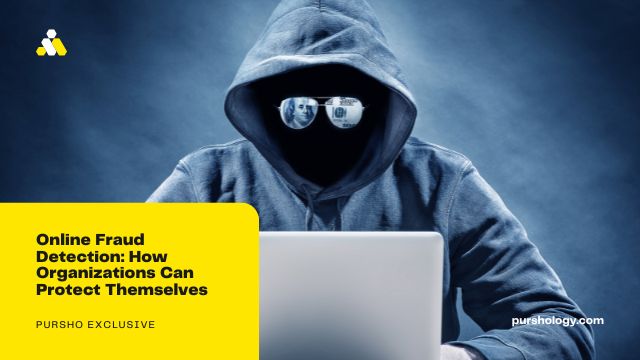With the rise of online payments, the risk of online fraud has increased significantly. Companies must take steps to protect their customers and themselves from the dangers of online fraud. This article will discuss the methods organizations can use to detect and prevent online fraud, as well as how they can respond if fraud is detected.
Online fraud is a form of cybercrime where criminals use the internet to steal personal and financial information, such as credit card numbers or passwords. Criminals can also use online fraud to commit identity theft, which is when they assume another person’s identity in order to gain access to funds or services. Online fraud can be committed through phishing emails, malicious websites, or other deceptive methods.
Signs of Online Fraud
Organizations should be aware of the signs of online fraud, which can help them detect and protect their customers. Some common signs of online fraud include:
- Unfamiliar or unknown transactions
- Unexpected charges on credit cards or bank accounts
- Requests for personal information
- Suspicious emails or websites
- Unusual account activity
How to Detect Fraud
Organizations can take steps to detect online fraud and protect their customers. Here are some methods organizations can use online fraud detection:
- Monitor customer accounts for suspicious activity. Organizations should regularly monitor customer accounts for any unusual or suspicious activity. This can include keeping an eye out for unfamiliar transactions or unexpected charges.
- Use fraud detection software. Fraud detection software can help organizations detect patterns of fraudulent activity. This can include analyzing customer data to look for patterns that may indicate fraud.
- Use two-factor authentication. Two-factor authentication requires customers to verify their identity with a second authentication method, such as a code sent to their phone. This can help ensure that an account is only accessed by its rightful owner.
- Monitor customer complaints. Organizations should keep an eye out for customer complaints that may indicate fraud. This can include complaints about unexpected charges or requests for personal information.
How to Prevent Fraud
Organizations should also take steps to prevent online fraud. Here are some methods organizations can use to prevent fraud:
- Implement security protocols. Organizations should implement security protocols to protect customer data. This can include using encryption to protect data, as well as using two-factor authentication to verify the identity of customers.
- Educate customers. Organizations should educate their customers on the dangers of online fraud and how to protect themselves. This can include providing customers with best practices for making secure payments and avoiding phishing scams.
- Strengthen passwords. Organizations should also encourage customers to use strong passwords and avoid using the same password for multiple accounts.
How to Respond to Fraud
If an organization detects or suspects fraud, it is important to take immediate action. Here are some steps organizations can take to respond to fraud:
- Notify customers. Organizations should notify customers as soon as possible if fraud is detected or suspected. This can include letting customers know which accounts have been affected, as well as providing tips on how to protect their data in the future.
- Take action. Organizations should also take action to prevent further fraud. This can include freezing customer accounts or blocking suspicious transactions.
- Update security measures. Organizations should also update their security measures to prevent future fraud. This can include adding additional layers of authentication or strengthening passwords.
Conclusion
Online fraud is a major concern for organizations and their customers. Organizations must take steps to detect and prevent fraud in order to protect their customers and themselves. This includes monitoring customer accounts, using fraud detection software, and implementing security protocols. Organizations should also respond quickly if fraud is detected or suspected, including notifying customers and taking action to prevent further fraud. By taking these steps, organizations can protect their customers and themselves from the dangers of online fraud.







